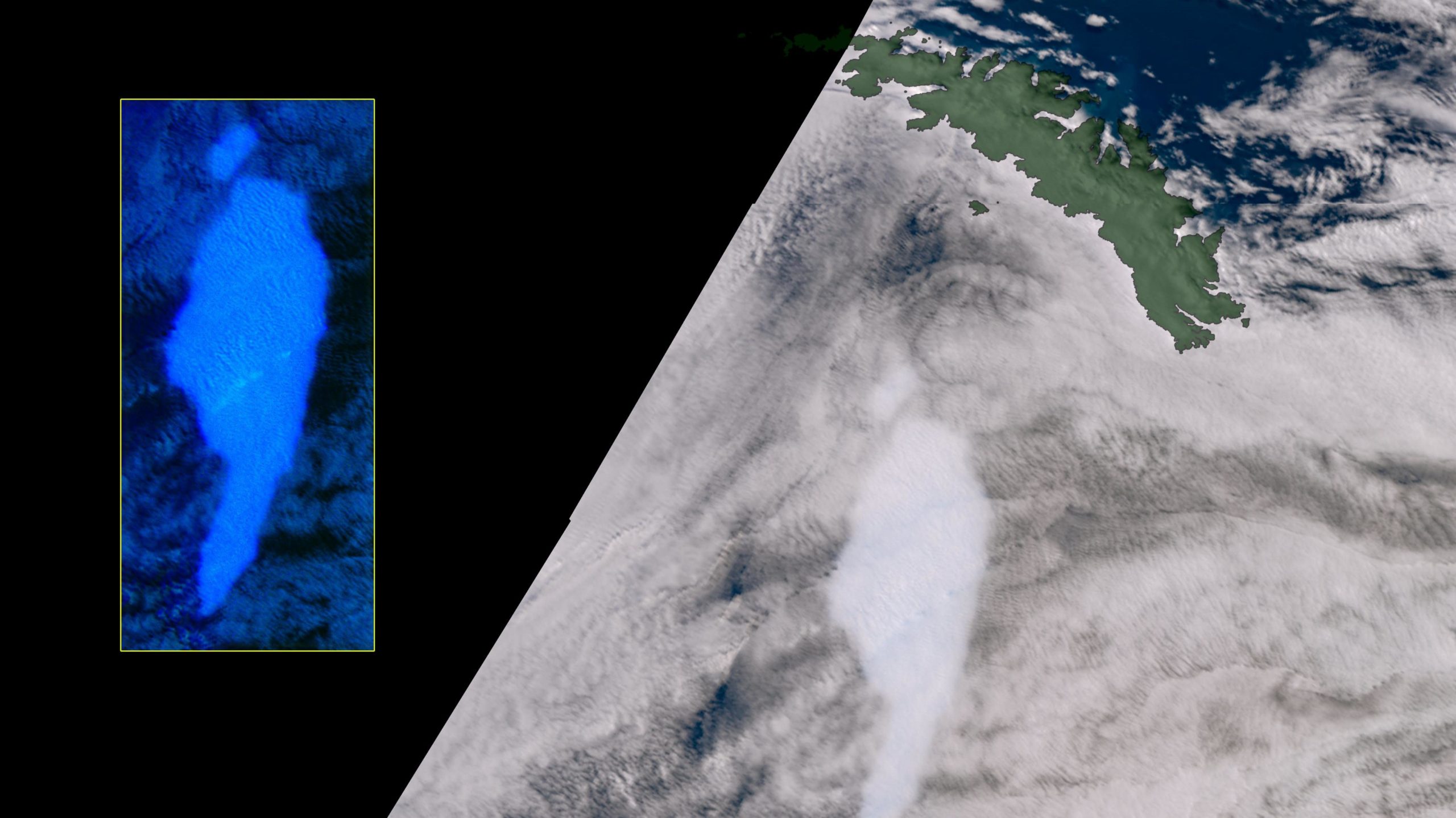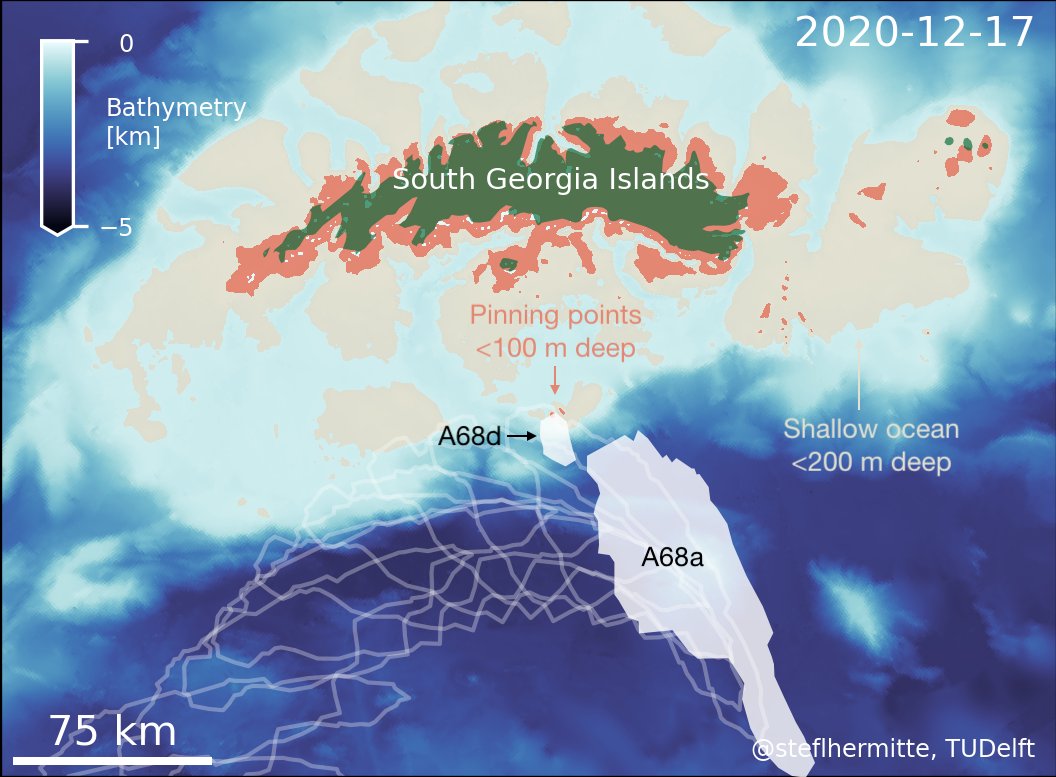The world’s largest free-floating iceberg appears to have lost its northernmost section, a possible result of it slamming into the shallow continental shelf surrounding the ecologically sensitive South Georgia island.
A chunk of ice measuring approximately 70 square miles (180 square kilometres) has sheared away from iceberg A68a, according to new photos taken by the Copernicus Sentinel-3 satellite and NASA’s MODIS satellite.
“What can be seen is the iceberg most likely hitting the continental shelf with its northern tip, causing a part to break off of it, thereby spawning a new berg,” Pierre Markuse, a remote sensing expert, explained in an email. “Up until now, it doesn’t seem like any parts of the iceberg are grounded, but satellite images in the next few days will show whether both parts still move freely with the currents.”

Indeed, satellite images taken a few days ago showed the 1,500-square-mile (3,884-square-kilometre) iceberg just 46 miles (74 kilometres) southwest of South Georgia, with its northern tip situated directly over the island’s shallow submarine shelf. This section likely became dislodged as A68a, pushed along by strong ocean currents, continued to move in a northeasterly direction.
“The satellite imagery shows that the iceberg A68a, in its sharp turn with the current around South Georgia Islands, hit the shallow ocean floor and lost a piece measuring around [70 square miles (181 square kilometres)],” Stef Lhermitte, a geoscientist and remote sensing expert from Delft University of Technology, explained in an email. The new iceberg is a relative baby, but it’s still more than three times the size of Manhattan.
According to Lhermitte, A68a has been following a trajectory consistent with previous large icebergs in the vicinity of South Georgia, icebergs A38 and A43 from 2003 to 2004 being good examples. A38b and A34b “got grounded on the shallow ocean near the island, whereas the other fragments of A38 just passed by,” said Lhermitte.
Many icebergs originating from Antarctica get swept up by the Southern Antarctic Circumpolar Front, a section of the ocean currents that swirl around the continent, which sends them towards South Georgia. Some manage to wriggle around the island, while others become lodged on the continental shelf. Iceberg A68a calved from Antarctica’s Larsen C Ice Shelf in July 2017 and has been drifting ever since, travelling some 930 miles (1,497 kilometres) over the past three-and-a-half years.

Due to its immense size, conservationists worried that should A68a get stuck at South Georgia, it would cause serious disruptions to the local wildlife for years to come, from penguins and seals through to krill and plankton. A team from the British Antarctic Survey has launched a mission to visit the island and its surrounding waters to assess the situation.
In time, the piece that just broke off will likely be granted its own name since it’s large enough to be monitored by maritime agencies. It would likely be dubbed A68d, as the main ‘berg birthed a pair of smaller ones labelled as A68b and A68c during an earlier phase of its long journey. That said, we’ll have to wait for an official name from the U.S. National Ice Centre, which is the “only organisation that names and tracks all Antarctic icebergs,” said Lhermitte, adding that the NIC “will most probably need a higher resolution satellite image” to make a definitive determination.
The most recent satellite image suggests A68a and its new baby ‘berg will not get stuck on the island’s shelf. Instead, Lhermitte said it’s likely that the icebergs will “be taken with the current around the island,” and we’ll soon see in the next few days “if they reach the shallow areas again or just get diverted.”
We’ll be watching.
